“How to use the cash envelope system?” is the question I’ve heard and read a lot of times. “Does it work? Is it for everyone?”
To find out why a lot of people start using this method keep on reading. I will break it down into 7 doable steps that you can take right after reading this post.
I also prepared some free stuff for you here, so let’s not waste time and dive right in!
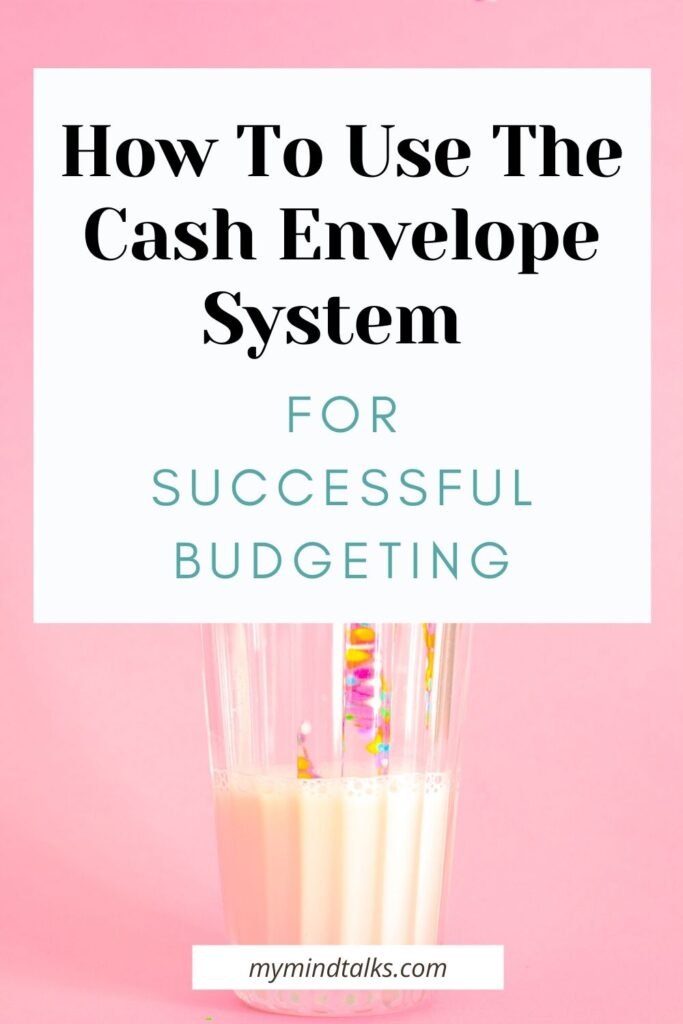
What Is The Cash Envelope System?
The Cash Envelope System is a great method to track exactly how much money you spend by keeping it in different envelopes, which are assigned to different categories.
It’s super easy even if it may sound a little complex, but trust me, it’s an easy way to stick to your monthly budget, see where your money’s going, and not overspend.
Why should you use The Cash Envelope System?
Well, here are some advantages to using this budgeting method.
It is visual.
The main advantage of using the cash envelope system is that it’s visual.
I think that’s why it’s so effective. When we use cash it gets much easier to see and evaluate where our money is going.
That prevents us from overspending and helps us stick to our monthly budget.
We become more disciplined.
When we see how much money we tucked away in the envelope for, let’s say, groceries, we become more disciplined when we do our shopping trips.
We know exactly how much money we have left for this particular category, so again, we will stay within our limit.
It’s tangible and different on a psychological level.
Just like it’s visual, and you can see your envelopes and cash, it’s also tangible, meaning you can touch it.
It makes it easier psychologically to overspend when you use credit cards.
You just swipe the card and get a new TV or clothes. However, it’s much harder for us, human beings, to let go of our hard-earned cash.
That’s why this system works and will work in 10 years.
How to use the cash envelope system for budgeting step-by-step guide.
When you are just starting, you have no idea how much money you need for your monthly budget. This is essential and you cannot keep moving forward without doing this part.
1. Track your expenses.
Okay, so, as I just mentioned, before you even start using the envelopes, the most overwhelming part is to find out how much money you will need to keep tucked away in every envelope for each category.
This part involves analyzing your past bank statements, tracking your expenses, collecting, and analyzing your receipts.
You can use the highlighter budgeting method for tracking your expenses.
Creating a realistic budget will also help you with the first and second steps when you will need to categorize your spending.
So if you use this worksheet you will be able to track how much money you spend every month on different categories.
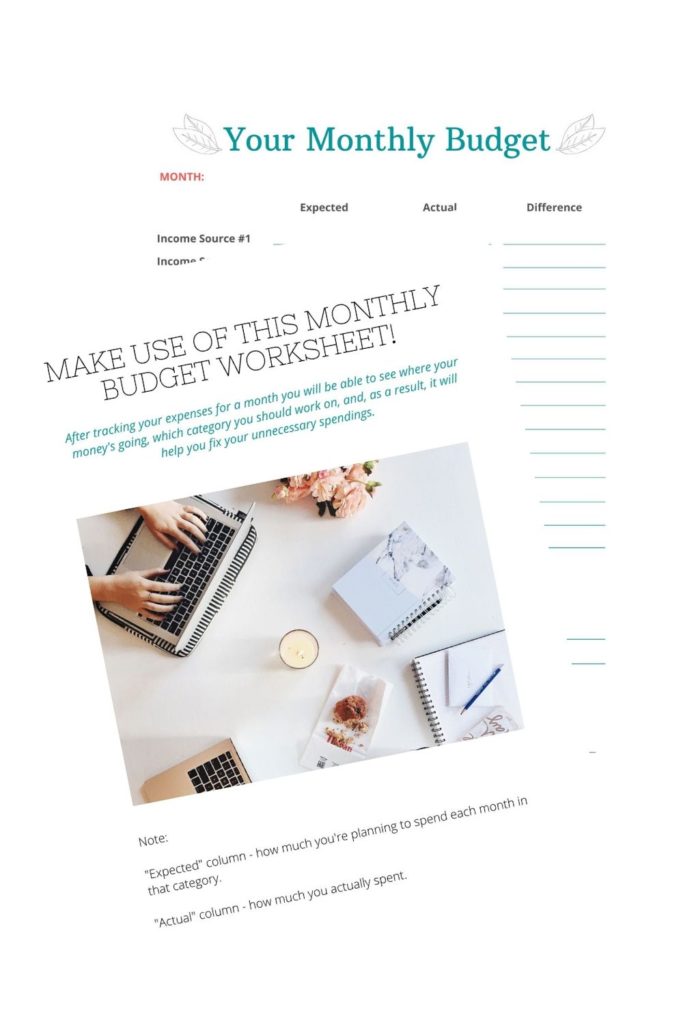
2. Start categorizing
After you have tracked your expenses for at least 1 month and you know how much money you spend on each category you can start categorizing your spending.
There are two types of expenses: fixed and variable expenses.
Fixed expenses are those that can’t be easily changed but you have to pay those bills regularly.
They include car payments, mortgage or rent payments, insurance premiums, real estate taxes, and so on.
If you think about your cell phone and cable bills or what you pay for your gym membership, the costs are fixed, but you can always lower them. Here you can read about 14 expenses that you shouldn’t spend money on.
When you deal with fixed expenses it’s better and more convenient when they’re paid online. The good thing about it is that you can automate those bills.
On the other side, there are variable expenses.
Variable expenses represent your daily spending decisions. Do you prefer cooking at home or eating out more often? Do you make coffee at home or grab one in Starbucks?
These expenses are defined as ‘variable’ because the amount you spend on them may vary each month. And they usually include gas for your car, utility bills, grocery bills, clothing, how much money you spend on entertainment, and so on.
It’s individual, but I find it convenient to have these categories: “food”(including groceries and eating out), “fun”(including all kinds of entertainment + shopping), “car” and “misc.” (for unexpected expenses or one-off purchases).
And here’s where using the cash envelope system can be very helpful.
After you decided which categories in your budget are variable expenses, now it’s time for you to establish limits for each of those categories (in other words which categories in your budget do you want to spend in cash).
3. Establish limits for each category
What you did in step #1 will help you with this. Look at your monthly budget worksheet and your spending trends, so you can set a cash value that you will have in each envelope.
Remember that the amount of money will change as you go, and it’s okay.
4. Label each envelope with a category name.
Once you know how many categories you will have and how much money you will keep in each envelope, you can label them with a marker or you can also use a label maker machine!
I created 3 different envelope templates with a spending tracker built right into the back of the envelope. It helps you track where your cash is going each month, so you can make changes in your spending habits if needed.
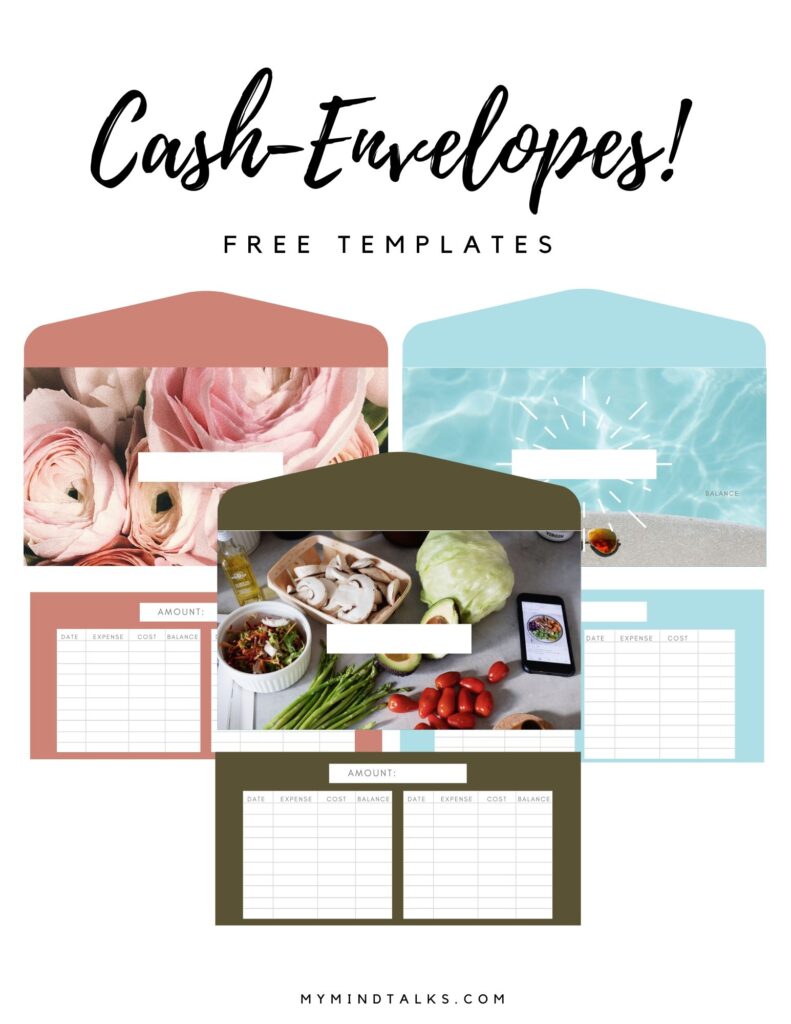
5. Decide when to withdraw cash.
Depending on when you get paid, whether it’s once or twice a month, you need to decide when you’re going to pull out enough cash for your envelopes.
Let’s say you get paid on the 4th and the 18th day of every month. Based on those days, after you pay your bills online, you can withdraw cash and allocate it to the different envelope categories.
But if you get paid once a month, it’s the same procedure, but you withdraw enough cash to last the entire month.
6. Time to stuff your envelopes!
After you’ve tracked your expenses, found out what your realistic budget looks like, created categories, established limits, labeled each envelope with a category name, and decided when you want to pull out cash for your envelopes, it’s time to stuff them!
Withdraw the amount of money you need to fund your envelopes. Usually, it’s done after you’ve paid your bills (fixed expenses) online.
Once you have the cash, stuff each envelope with the amount of money you’ve budgeted for each category. If you’ve budgeted $250 for food, then put $250 in your “food” envelope. And do the same for each category you’ve created.
7. Stick to the amount you’ve budgeted for each category.
This is a very important part of the cash envelope system. It’s crucial to use the money in the envelopes only what you’ve designated it for.
To do that I mentioned creating a Realistic Budget as a very first step and it’s essential.
Otherwise, you will be stealing from one envelope, then another, and as a result, it’s not going to be enough money for you to buy groceries, let’s say that’s the envelope you stole from.
If you do steal from an envelope, make sure that you still have enough money to cover your category expenses to get you to your next paycheck.
Adjustments are more than okay when you’re starting.
Don’t forget to track what you spend on by using index cards or the envelope templates I mentioned above. It will help you review your purchases and spending overall, maybe there’s something you should change or stop buying at all.
Let’s recap the steps you should take to start using the cash envelope system:
- #1: Track your expenses.
- #2: Start categorizing.
- #3: Establish limits for each category.
- #4: Label each envelope with a category name.
- #5: Decide when to withdraw cash.
- #6: Time to stuff your envelopes.
- #7: Stick to the amount you’ve budgeted for each category.
Well, I think now you’re ready to start your budgeting journey using the cash envelope system! I listed 7 major steps to start using this amazing system for budgeting.
If you enjoyed this post, please share it. A share from you would seriously help a lot with the growth of this blog, my dear reader and it won’t take longer than 10 seconds.
Pin it or share over your social media 🙂
Thank you so much!
Here’s a question for you: Are you currently using any budgeting techniques? If yes, let me know in the comments, I’m really curious!
If you’re serious about taking control of your finances check out The Financial Planner Bundle on Etsy.
Happy Budgeting!
Read More:
12 Good Spending Habits That Will Save You Money
18 Genius Ideas Of Financial Goals To Set And Crush This Year
10+ Best Dave Ramsey Tips To Achieve Financial Freedom
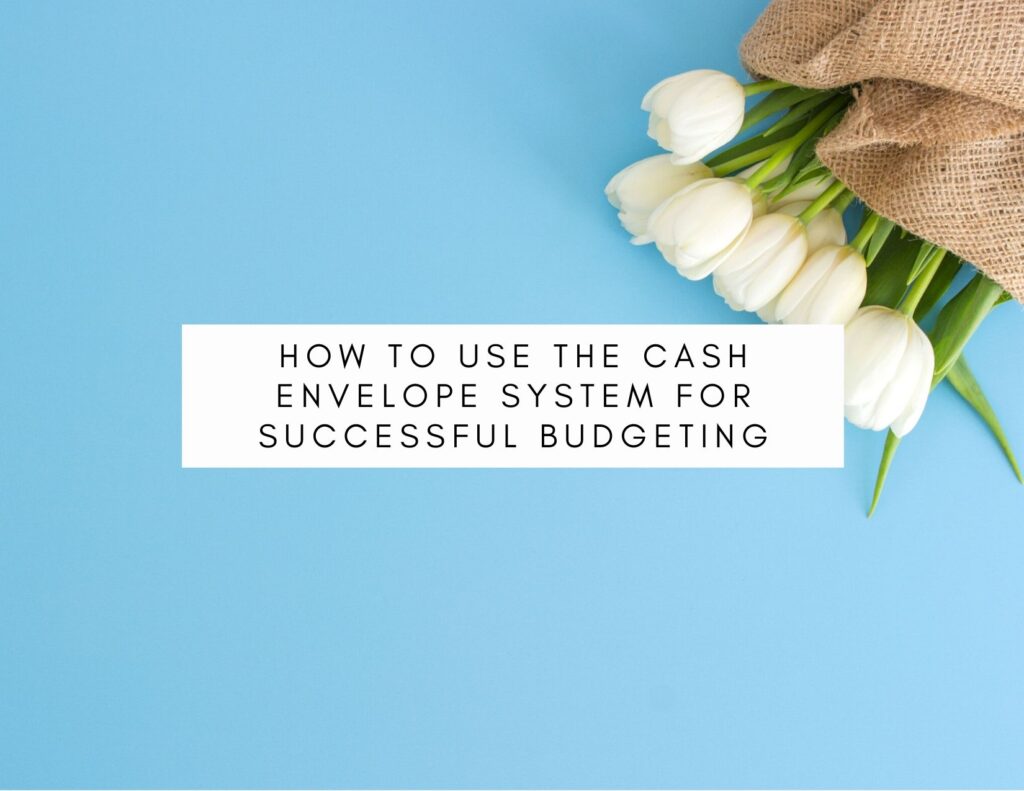
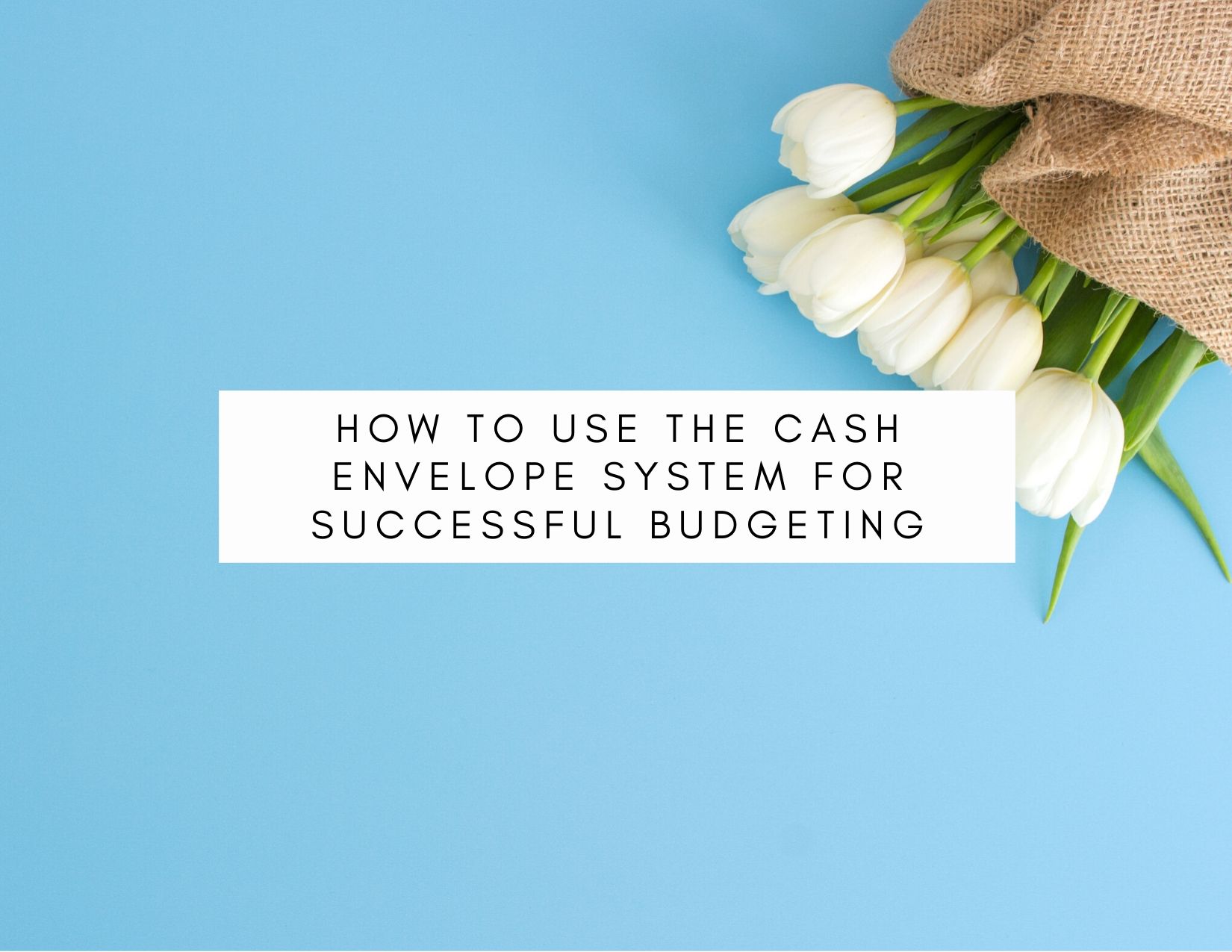
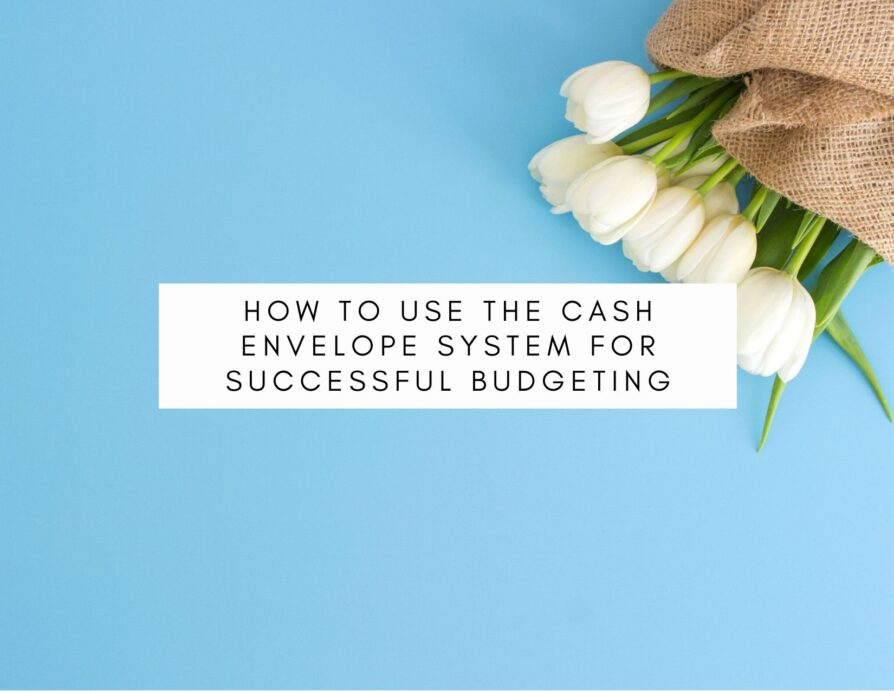
I LOVE the envelope system for sticking to my budget! I fought it for years but once I started, I’ll never go back! There’s just something different about real cash leaving your hands vs swiping a card!
Exactly! I love it and I think it’s a really smart way to stick to your budget! Starting out is always hard but it’s worth every drop of sweat haha
I’ve tried it – problem is that I can’t stick to it
I’m sure you found something that works for you!
Such a great idea! Credit and debit cards make it feel like the money is just appearing and disappearing out of nowhere – holding actual, tangible cash makes such a huge difference in how your brain processes it! Thanks so much for sharing 🙂
Exactly! Letting go of our cash is much harder haha
Thanks for sharing! 🙂